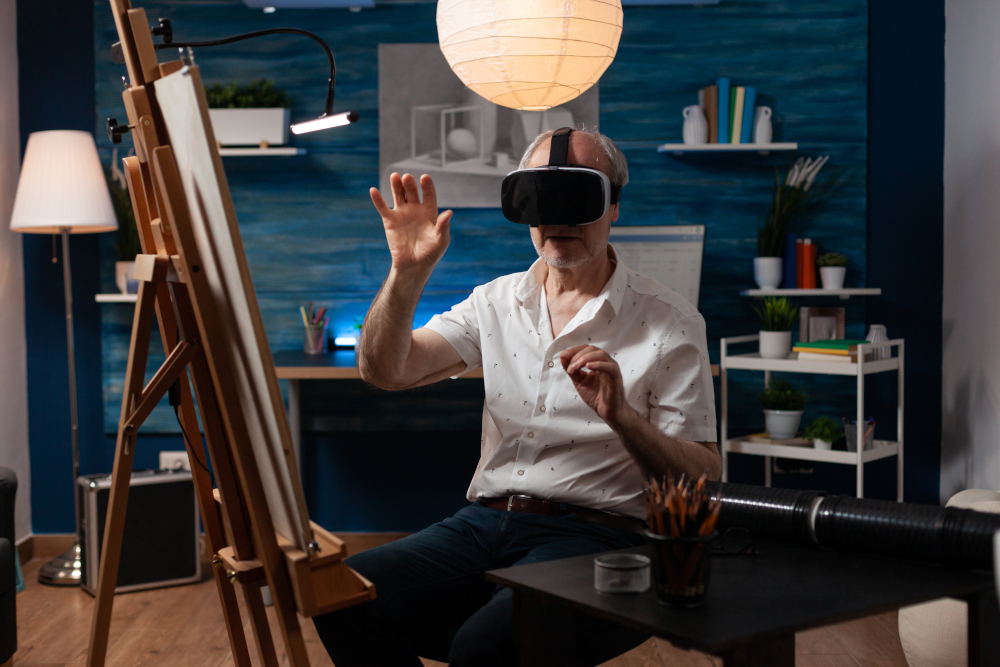
The art world is always changing, evolving, and progressing toward new understandings.
This fluent state of creation makes artmaking so exciting, as we can always be looking forward to more crazy and cool new ideas and inventions to come.
If you are also excited about the future of art, you may want to explore what possibilities there are waiting for you.
There are so many different ways in which the art world has changed over time, and there is only more to come.
To summarize before we begin a deep dive into the nature of the possibilities of digital art, digital art is any art that is made using and involving digital technology. Digital art has grown to become an extremely popular medium of art-making in today’s day and age.
This is largely a result of society’s constant exploration of digital technology, which has allowed artists to take advantage of and expand upon technology in new and creative ways.
If you are interested in creating digital art of your own, you could check out some of our courses, such as our Procreate Digital Art Courses, to help you along the way.
Art is a foundational expressive form amongst humanity.
It has existed for centuries and will continue to exist and progress alongside many more! When taking a look at the latest technologies used in digital art, it is important to have a knowledge of the history of art.
Art has come a long way over the centuries, from cave paintings and stone carvings in the Paleolithic era to our new era of creating art in unison with digital technology—such as AI-generated art—in the 21st century.
This shows how evolutionary the practice of art is, making the future all the more exciting.
The evolution of art is extensive, as forms of manmade art can be dated as far back as 30,000 BC, with stone carvings and figurines identified as relics from the Paleolithic era.
From this date onwards, many leaps and bounds have been made in man’s artmaking abilities, and as technology has progressed further and further, so has art.
Early digitalization in the art can be seen through the use and inventions of cameras, or camera-like technologies, such as the 400 BC Camera Obscura. Using this device allowed artists to project images and then trace them onto paper to draw or recreate scenes.
As time progressed, many more digital technologies were introduced, with significant eras like the industrial revolution, introducing many mechanical inventions to the art space.
Cameras have allowed filmmakers to bring their ideas to life, expressing their artistic visions through the use of digital technology. The first film made in the late 1800s showed the capabilities of digital technologies, using the camera to create the visualization of a narrative.
Ever since then, this life-changing medium of art has maintained its importance in the world. Modern-day film requires an elaborate setup of production and post-production technologies.
This involves many different computerized elements, such as sound editing, VFX, or simply filming using a camera. Film revealed the monumental possibilities created when combining digital technology with the mind of an artist.
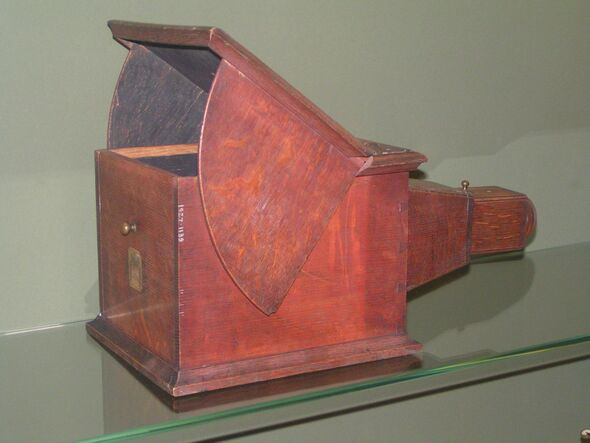
Art allows for new ideas and inventions to challenge its boundaries, always evolving and pushing forward toward reinvention. This has allowed artists to experiment with all aspects of artmaking, including but not limited to the materials used to make the art.
Digitalization has been a large and ongoing change within the art world, with people discovering how to integrate this new technology into their artmaking.
Let’s complete a quick, short art history lesson.
To understand digital art, knowledge of the art movements can come in handy. The art movements are split into several different periods, with more significant eras defining whole ideologies surrounding society’s perception of art and art making.
The first technologically defining art era was the Renaissance.
This period of art spanned from the 14th to the 16th century and involved the rebirth of classical art! Although it focused on classical ideals, the Renaissance was conducted in a time period that allowed for the introduction of new technologies.
These new technologies can be seen through the heavier focus on scientific discoveries of anatomy, perspective, and mathematics, which were used to help idealize their naturalism.
The Renaissance also physically saw technological advancements with the invention of the printing press, which challenged the role of the artist and allowed for larger productions of artmaking.
On top of this, the Renaissance celebrated the birth of digitalization through cameras and photography, creating a whole new era of artmaking and showing the importance of using technology in the art world.
This golden era of art was able to be so influential and enhancing due to its embracing of digital and new technologies.
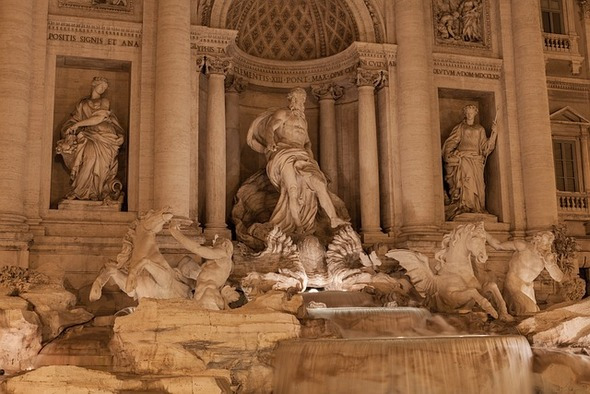
In the early 20th century a new pivotal art movement in regards to technological advancement rolled around. Modernism.
The Modern era reveals the impact that digitalization and new technology have had on the art space, and as humanity progressed more into the technologically advanced, so did art.
This period actually began involving motorized vehicles in the process of painting, with artists like Len Lye using technology to create kinetic sculptures.
Machinery, technology, and digital media began being incorporated into the artmaking process more integrally, and artists began to invite the new discoveries that came along with the oncoming electronic age.
This opened up the world to the idea of combining digital media and art to create thought-provoking and shocking works.
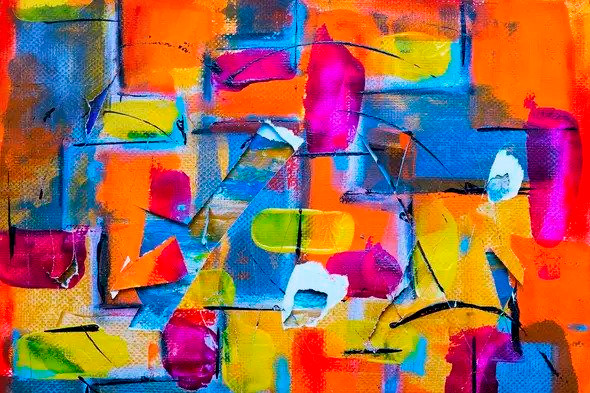
The term ‘digital art’ only first emerged during the Postmodern period in the early 1980s, as computer engineers invented a new technology that allowed for paintings to be created digitally.
This creation, pioneered by Harold Cohen, revealed how computers and digital technology can be used to create art, showing the capabilities of digital art-making within the art world.
Cohen was able to popularize the term ‘digital art’ with his invention of this technology—referred to as AARON. This manifested a universal excitement about the boundaries of artmaking as the world progressed from modernism into a state of postmodernism.
This focus on postmodern artmaking meant a rejection of traditional artistic values, resulting in an acceptance of the concept of using digital technologies to make art!
This rich history shows how art has progressed throughout time, particularly how it has been able to evolve alongside the digital world. This makes the future of art such an exciting prospect.
There is so much more to come! What new inventions could change the way we view art forever?
Digital art has become synonymous with computer drawing programs. These programs have become far more accessible and intensive over time. So let’s have a look at the history of computer-aided drawings and programs!
In the 60s, the beginning murmurs of computer drawing programs began to be heard—although it was not yet considered ‘digital art’, artists began experimenting with new technology throughout these earlier years.
In the 1960s, John Whitney created one of the first computer-generated artworks. He used digital and mechanical apparatuses to link musical composition with visuals by engaging with computer imaging and technology.
In the ’60s, other artists, such as Paul Klee, used computer algorithms to create computer-generated art!
In the 80s, after AARON was invented, the artmaking space began to focus more on digital art as opposed to computer-assisted, algorithmic-generated artworks.
This saw a large increase in computer drawing programs as competitors began to introduce several different painting platforms.
The first paint program was known as PCPaint and was invented in 1984. This was the original IBM PC-based mouse-driven GUI computer drawing program, and it allowed users to paint digitized artworks onto the program from their computer.
After this, many other computer drawing programs were introduced, such as the 1985 version of Paint or Apple’s 1984 line of drawing and vector drawing programs known as MacPaint and MacDraw. The late 80s also saw the influential introduction of Adobe Illustrator and Adobe Photoshop.
In the 21st century, these technologies have been expanded upon and are now extremely accessible to everyone who wishes to create digital art using computer drawing programs.
If you want to learn more about how to use some of the more popular digital art programs, you can check out our courses ‘Digital Drawing in Photoshop’ or ‘Digital Illustration with Procreate’. Also, check out our collection of best procreate courses and illustration courses.
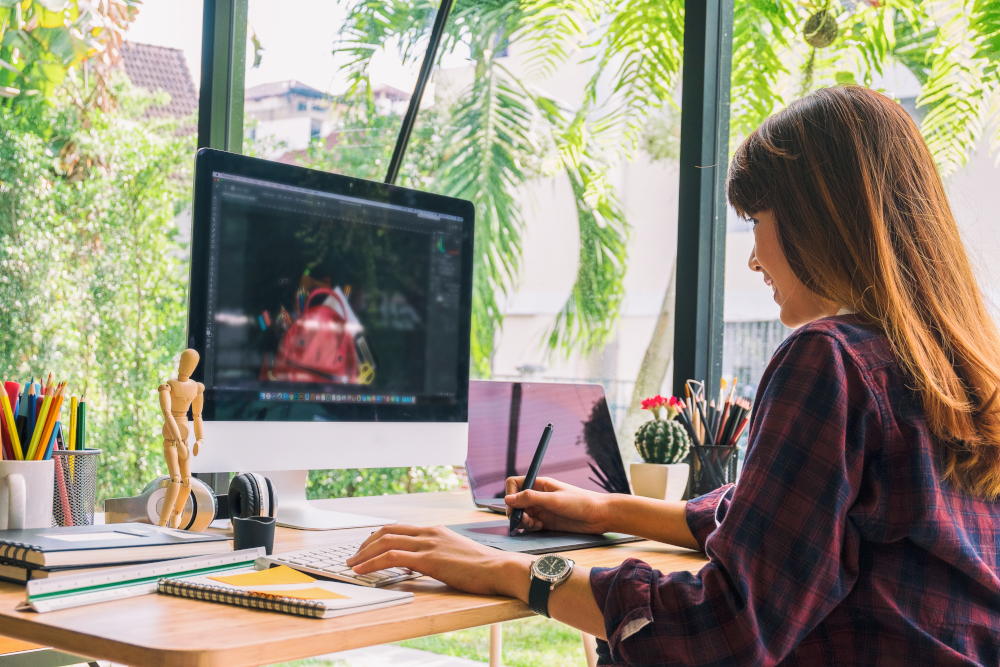
Ever since its invention, digital art has become a staple practice among artists. It can be seen in many different creative endeavors, used in several forms and for several reasons.
If you were interested in the future of digital art, it could be good to know what the present digital art space looks like.
So let’s take a look at the different types of digital art.
Digital painting and drawing is perhaps the most well-known form of digital art! This practice involves artists using computer drawing programs to create artwork digitally.
These programs allow the artist to use or create brushes or pencils that mimic traditional painting and drawing utensils, using these tools to create whatever artwork they please. Digital painting and drawing is extremely popular as it is an extremely effective way of creating art.
Digital painting and drawing still require the skill and technique needed to draw with pen and paper. However, it has become popularized and favored in the modern day. There are several reasons that someone may wish to use digital drawing platforms.
For example, you can layer your artwork, meaning that you can keep your complicated and intricate works more systematically organized. You can experiment more freely without worrying about wasting products. Therefore, it could be a more cost-effective alternative to traditional art.
Overall it is clear that digital painting and drawing is an extremely useful art medium.
At the end of the day, the definition of digital painting and drawing is simple.
It is the process of creating a painting or drawing digitally.
Vector art is another significant type of digital art that is a large part of contemporary art-making practices. If you have ever been interested in graphic design, vector art is an important aspect of this popular and high-demand process.
Vector art is created with vector design software. This type of digital art involves using mathematical formulas to create shapes and lines as opposed to using pixels. These shapes and lines are made by points that can be joined together to formulate lines and, eventually, shapes.
Because vector art does not involve pixels that means you can create designs that will always be of extremely enhanced quality. This makes vector art extremely beneficial for graphic designers as they can use vector art programs to produce extremely crisp and high-definition shapes and designs.
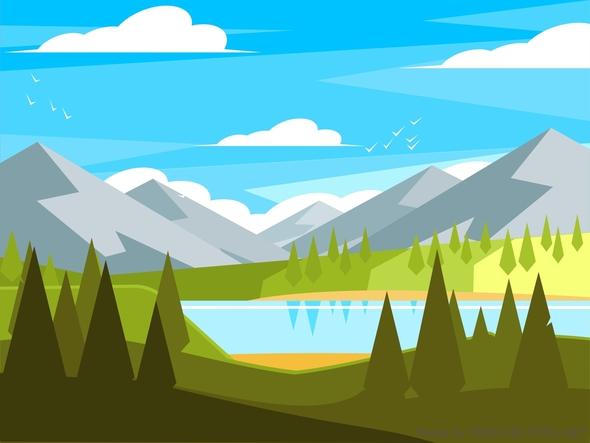
3D modeling is a form of digital art that allows artists to manipulate lines and shapes on a plane to create a mesh that becomes a 3D model of an object. 3D modeling is used to create 3D graphics and can even be animated, such as in video games!
3D sculpting is a similar but more modern version of 3D modeling. 3D sculpting is exactly what it sounds like… sculpting in 3D.
To do so, you are presented with a sort of digital block of clay that can be manipulated to create whatever form or object you wish to sculpt. This is often used to create 3D images of people, props, and much much more.
Photo Manipulation involves taking an image and drawing over or manipulating it using digital technology. This allows artists to create more realistic digital artworks as they blend together images and drawings to create a hyper-realistic digital design.
This can also be referred to as matte painting, which involves an artist blending together real-life scenes with a drawn background to create realistic, but imagined, digital imagery.
Animation is a major part of digital art as technology has advanced towards aiding animators in creating incredible pieces with the use of digital programming.
2D animation is a significant aspect of animation; I am sure you can think of many childhood favorites or even current favorite films and TV shows made using 2D animation!
Thanks to digital technology, there are multiple methods to achieving 2D animation. The main two categories are frame or skeletal animation!.
If you ever made post-it note animations when you were younger—drawing little stick figures that moved bit by bit on each page and then flicking through to watch the scene you created come to action—then you are familiar with the type of work it takes to make a frame-based animation.
Frame animation involves animators drawing frames, slightly altering them bit by bit as the scene changes until eventually gathering enough movement to create a holistic animation.
This is often aided by digital technology, as artists can draw their objects on computer drawing programs, allowing them to manipulate the layers and change the frames more seamlessly.
Skeletal animation is a less time-consuming technique. With the aid of computer-based technology, animators are now able to create a skeleton outline of the object they wish to animate.
Afterward, they can use this software to move and animate the different bones of their skeleton, thus creating a 2D animation through the use of digital software.
If you were ever interested in experimenting with your own form of animation—but wanted to endeavor past the basic sticky note drawings – you could check out our accessible course, ‘Introduction to Animation.’
Digital art has progressed so far that it doesn’t just stop at 2D animation. Artists can now use technology to create full 3D scenes, sometimes so realistic you can’t even tell it isn’t a real-life image.
Skeletal-based animation allows artists to manipulate 3D modeling and sculpting, as a result creating whole 3D animations! Artists use technology such as CGI to create incredibly realistic, high-definition, and three-dimensional animations throughout films.
These types of animations are constantly progressing, with new forms of 3D animations continually being released. For example, films like ‘Avatar: The Way of Water’ are constantly redefining the software used to create 3D animation.
This film alone shows how much digital art can evolve and progress as it introduced a new system to be used for facial animation! As we think about the progression of animated filmmaking in recent years, it is clear there has been a trend leaning towards more and more 3D animation.
This is a result of constant technological advancements which have made this form of digital art an incredibly favorable medium to use in filmmaking.
Digital art has a rich history that has allowed it to become a core part of art-making in the 21st century. It has changed and evolved over the years, becoming an art form that is seen in many different forms in current-day art.
After all this evolution, you may be wondering what is going on with digital art today. There are so many new and interesting technologies to be excited about in this current day, with many discoveries and inventions changing the way artists and viewers interact with art in the 21st century.
So, let’s take a look at the latest technologies used in digital art!
Both Virtual Reality and Augmented Reality have been recent progressions in technology that have elevated mediums of artistic expression.
By using these technologies, artists can create incredibly immersive experiences for viewers, allowing the audience to interact with art in a three-dimensional space.
These mediums are seen as a sort of natural progression in artmaking, and it is predicted that artists will continue to experiment with this form, pushing this technology into new and creative realms.
Virtual Reality involves using a headset to become transported to a new world, meaning that artists can completely manipulate the dimensional space that viewers see through this lens. This completely takes the audience out of reality, transporting them to new and imagined worlds.
Augmented Reality, however, does not take the audience out of the real world. Instead, it uses technology and visual manipulation to ‘augment’ the audience’s view of reality.
This allows the artist to manipulate reality completely, challenging the viewers’ perception of the world and their surroundings using digital technology.
Hopefully, artists will continue to find new ways to progress in their digital art-making by using these new technologies, sometimes referred to as the future of art.
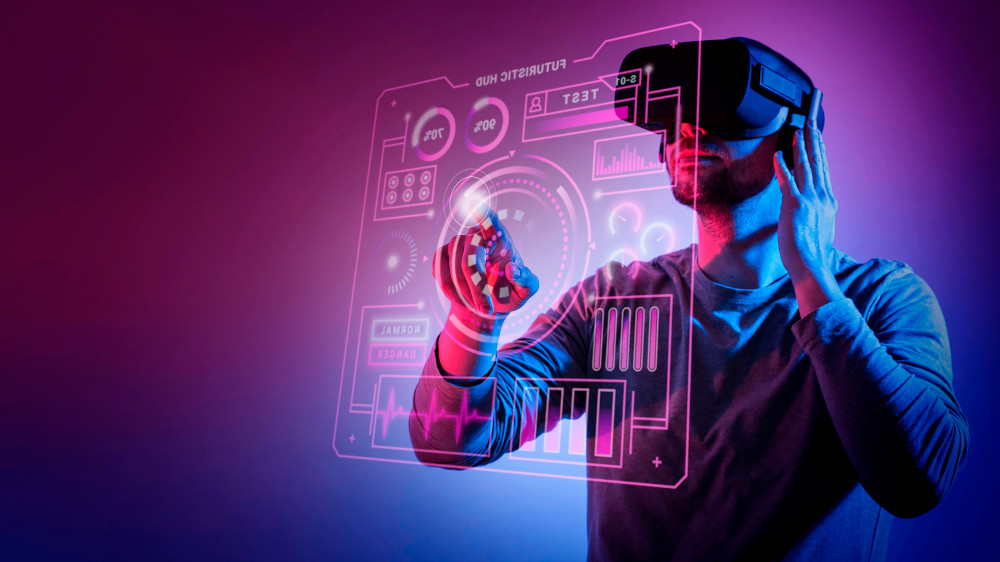
A new and more controversial technology in the art world is AI art or artificial intelligence. AI art is a sort of generative art as AI algorithms are used to create new images and designs.
This form of art has endless possibilities and can be experimented with in so many different ways, allowing artists to use mechanical and digital technology to push the limits of creation.
However, AI has been a polarizing topic, with some concerns regarding the legitimacy and artistic morality of using such technology.
Because AI relies entirely on computer algorithms, the hand of the artists becomes irrelevant. This could result in taking opportunities and recognition away from digital artists.
Although it is undeniable that AI is an interesting evolution in the technological space, its role in the art world is still uncertain and highly debatable.
Motion Graphics has been a significant evolution, particularly in film, as it helps to create animated graphics that can be used in films, videos, and other multimedia projects.
A motion graphic, put simply, is an animated version of a graphic design.
Motion Graphics have been used in the art for many years. However, it is only with new technology that this medium has become popularized and more effective in its usage.
3D printing is an idea many of us have heard of. It is an incredibly exciting and talked about prospect that can transform the nature of artmaking.
In the world of digital art, 3D printing allows creators to turn their designs into sculptures and designs, printing out the designs that they mold digitally and transforming them into a physical structure.
This opens up so many possibilities for artists and is quickly becoming an accessible and popular means of 21st-century art-making!
Deepfake has been a highly talked about topic due to its controversial nature as it allows for video manipulation which can alter or even steal someone’s identity.
Deepfake, meaning “deep learning” and “fake”, can be extremely realistic and hard to differentiate from reality. As a result, this technology has been used and talked about in a harmful light since its birth.
However, this digital technology has been explored as a medium in the art world, used instead for creative expression!
The use of Deepfake in the art realm can be seen as artists have used the technology to conceptually challenge the audience.
This can be seen in certain exhibitions where artists use Deepfake to bring dead artists back to life or embody and manipulate the visuals of famous figures.
Whilst Deepfake is still problematic, artists are still finding ways to adapt this new technology to create challenging concepts through their digital art.
NFTs are considered a form of monetization for art in the modern and digital world. NFTs refer to “Non-Fungible Tokens”, which are digital tokens that allow people to buy digital ownership of digital art.
The success of NFTs has helped to fund many artists who may have previously had no way to sell their art. Now artists are selling, trading, and creating NFTs as a source of income, taking advantage of this recent craze to try and monetize their artworks with this new digital form of currency.
Although some people view NFTs as a pointless prospect, with people paying extreme amounts to gain ‘ownership’ of images everyone can access on the internet, some artists have been finding this modern technological advancement quite validating.
Many artists view NFTs as a legitimate and positive way to pay digital artists for their work, and as a result, it has become a very significant aspect of digital art making and selling in the 21st century.
The modern world has provided artists with more opportunities to showcase their work through technological advancements.
Before the internet, artwork was only accessible to view in person, meaning that artists had a hard time getting their work out there. In today’s day and age, sharing your art is easy and free for anyone.
Artists can share on several different social media platforms or even on specialized art platforms such as DeviantArt.
As a result, this means that artists can use technology to share their work more easily. This is a significant and helpful change in technology that will help digital artists pursue their careers.
CGI has been a major part of animation in films in recent years. This technology is continuing to evolve in new ways, which makes filmmaking even more advanced and technologically involved.
Digital animation has been aided by CGI (Computer Generated Imagery) technology, which is continuing to evolve and adapt every day.
In recent years CGI has grown massively, becoming an incredible and groundbreaking use of technology in art. CGI technology has become so high quality it can become seamlessly blended with reality, making it hard to differentiate it from reality.
Take a look at ‘Avatar’ vs ‘Avatar: The Way of Water,’ two CGI movies that both show the latest limits of CGI during the time period they were released. The first ‘Avatar’ was groundbreaking, using new CGI technology to animate actors using performance capture.
This CGI technology was expanded upon even further in ‘Avatar: The Way of Water,’ as they invented a way of using underwater performance capture, a groundbreaking feat in visual effects technology that shows how CGI has continued to progress throughout the years.
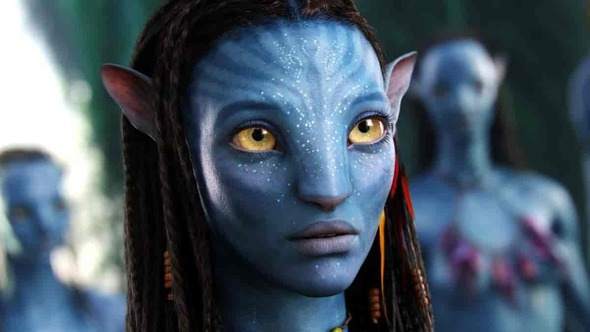
Now that we are all caught up in the past and present world of digital art, there is just one place left to go – the future.
We already have glimpses of what art could evolve towards as we move towards a new technological age, so what people are saying is yet to come.
What is already well on its way? How are technologies going to evolve?
There are many new and exciting progressions to look forward to in digital art. As we now know, digital art has progressed in many different ways. So what direction are we heading in now?
There are a few main categories of change, these being how art is viewed, sold, and created. Let’s take a look at how this is going to change.
As we have seen, digital art has grown to become an extremely normalized practice in the art world. This suggests that this art trend will simply just continue in a linear progression, with digital art becoming even more accessible and common among artists.
As a result, art will lean further and further into the digital medium. This can mean many different things, including a change in both how we see artists and how we see their artworks.
First of all, the rise in digital artmaking will cause an increase in demand for digital artists, meaning that digital creators will become more critical and important players in the art world.
Digital art may even become known as the primary form of art as we progress more toward complete technological involvement.
In a more physical sense, the way the audience sees art will continue to change as simulation and immersive art continue to progress.
Digital technology creates many exciting new prospects for art lovers, as there are now more opportunities for people to access art, using online platforms to view creations instead of visiting art strictly in galleries.
As well as this, the gallery space itself is changing, calling for more interactive pieces which are being supported by technology. Artists have already begun experimenting with implementing VR and AR in the gallery space, but with more time, who knows what cool new ways of art presenting could be introduced?
The possibilities are limitless.
The art market has drastically changed over the years, with new digital ways of selling and trading being introduced! As lots of art is moving towards digitalization, so is the market.
This is seen through the craze and popularization of trading art through NFTs, an unpredictable trend that could either continue to grow or fall apart in the future.
As well as this, digital technology has allowed artists to showcase their work on social media platforms, which means artists can sell their art digitally through their own online revenue methods.
There are many ways that these techniques may continue to grow. Who knows what new technology will be introduced to help artists sell art digitally? The art market, even after COVID, has been extremely resilient and stable.
This excitingly only suggests positive changes for the future of the art trade.
After reflecting on the history of art, it is clear that artists are extremely adaptable and willing to embrace change. This creative nature has already been playing out well with the incorporation of digital technology in art practices, and hopefully, this will continue to flourish.
Many have even hypothesized that digital art will become the new primary source of art creation, taking over traditional mediums and completely reinventing the art space.
Because of its ever-changing nature, there are so many things to look forward to in the digital art space. It will be particularly interesting to watch how immersive technologies, such as VR and AR continue to evolve.
Experimenting and blurring art and reality through the use of this technology could eventually create some crazy and mind-boggling results.
We will just have to wait and see.
The future of art is an incredibly exciting prospect, but it is only made visualizable through an understanding of what technology we already currently have.
It is impossible to see the future, so any future we can comprehend will be an expansion upon what we have already seen growing in the digital art space.
That just means that on top of these incredibly exciting future endeavors in things like VR, AR, CGI, and AI, there are many insane and unpredictable new creations that will come about in the near future.
We are just going to have to wait around to see them. Or maybe even go out and experiment with our own digital art technologies ourselves!
Digital art has been, and will continue to be, an important element of art throughout history. Art has changed a lot over the years, with one of the largest and most consistent changes being the introduction of digital technology.
This idea of mixing art and technology began many years ago, with things like cameras or mechanical devices such as AARON, but since then, it has become an integral part of the art world.
Digital art has become one of the most popular forms of art, and not only that, it is present in so many different spaces and practices.
Seen being used everywhere, from film to your own bedroom! This popularization of digital art makes it all the more exciting to take a look at the latest technologies used in digital art.
Even if you aren’t a digital artist yourself, it is still so interesting to consider the incredible new technology, such as AR, VR, and AI, being used in the art world today. Now, it’s time to look forward to the future of art. I am sure that there will be so many more incredible new technologies to come.
If you are interested in digital art, then 21 Draw has a wide variety of courses. From character design to lighting and shading, from drawing superheroes to drawing creatures, we have a course for everyone. You can check out all our drawing courses here.
Emma is an Australian Freelance Writer, eager to create informative and interesting writing which expresses her creative passions. Emma is currently studying Fine Arts at the Queensland University of Technology.